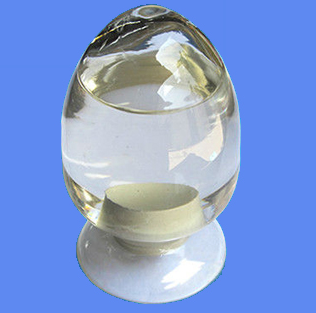|
| | Triethylene glycol dimethacrylate Chemical Properties |
| | Triethylene glycol dimethacrylate Usage And Synthesis |
| Description | Triethylene glycol dimethacrylate is used as a cross-linking agent in the synthesis of poly (methacrylic acid-g-ethylene glycol) hydrogels which shows large changes in swelling due to changes in pH, temperature and solvent composition. They are also used as divinylic methacrylic monomers which are widely used to form copolymers with divinylbenzene (DVB) and glycidyl methacrylate (GMA) or hydroxyethyl methacrylate (HEMA) comonomers. As a monomer, it is typically used in dental resin materials that can cause specific stress responses in eukaryotic cells. It commonly used to aesthetically restore the structure and function of teeth impaired by caries, erosion, or fracture.
It is cytotoxic via apoptosis, induce genotoxic effects, and delay the cell cycle. It also influences the response of cells of the innate immune system, inhibit specific odontoblast cell functions, or delay the odontogenic differentiation and mineralization processes in pulp-derived cells including stem cells. It is also used as a diluent co-monomer in dimethacrylate based dental composites as well as being used as a branching agent in the atom transfer radical polymerization (ATRP) of styrene.
| | Application | Triethylene glycol dimethacrylate (TEGDMA) is a resin monomer widely used in the composition of dentin bonding agents and composite resins to restore teeth structures impaired by caries and/or fractures. However, resin monomers can be released into the oral environment and can trigger hazardous biological effects on oral tissues. The release of the resin monomers due to degradation and incomplete polymerization can occur hours or days after the treatment. Due to its hydrophilic nature, hydrolysis plays an important role in the degradation processe of TEGDMA. Chemical interactions with oral fluids and mechanical influences may also cause the degradation of resin monomers. Direct contact or diffusion of resin monomers through the dentinal tubules creates ways of interaction between dental pulp tissue and resin monomers. Dentin thickness and the severity of caries lesions are important factors in determining the amount of resin monomers interacting with dental pulp tissue. TEGDMA has been reported to cause cytotoxicity, impaired cellular functions, pulpal inflammatory responses, and changes in the immune system. In addition, TEGDMA may reduce the mineralization capacity of dental pulp cells by decreasing the expression of the mineralization related genes pathways and causing adverse effects.
| | Reference | Krifka, S, et al. "A review of adaptive mechanisms in cell responses towards oxidative stress caused by dental resin monomers. " Biomaterials 34.19(2013):4555-4563.
| | Description | Triethylene glycol dimethacrylate was employed to
optimize the dilution of high-viscosity monomers and
to link together the macromolecules constituting the
polymer, to make their three-dimentional structure
more rigid. It is also a crosslinking agent of acrylic
resins, used in sealents or in dental bonding resins.
These are mainly used in dentistry, by dental technicians
and dentists. | | Chemical Properties | Colorless liquid
 | | Uses | Esters of acrylic acid and methacrylic acid, more commonly known as acrylates and methacrylates are key raw materials in the coatings and printing industry, and in food packaging. | | Uses | Triethyleneglycol dimethacrylate is a methacrylic monomer for use as cross-linking agent for adhesives and dental restorative materials. | | Uses | TEGDMA is a monomer typically used in dental resin materials that can cause specific stress responses in eukaryotic cells. | | General Description | Triethylene glycol dimethacrylate (TEGDMA) is a hydrophilic, low viscosity, difunctional methacrylic monomer employed as a crosslinking agent. |
| | Triethylene glycol dimethacrylate Preparation Products And Raw materials |
| Raw materials | Ethylene glycol-->Adipic acid-->1,4-Butanediol-->Terephthalic acid-->Trimellitic Anhydride-->2,2-Dimethyl-1,3-propanediol-->Methacrylic acid 8-hydroxy-3,6-dioxaoctane-1-yl ester-->2,2,3,3-tetramethyl-4,7,10-trioxa-3-siladodecan-12-ol-->DIMETHYLTIN DICHLORIDE-->4-Methoxyphenol-->Methacrylic acid-->Methacryloyl chloride | | Preparation Products | Sulfur-->Trimellitic Anhydride-->Various color alkyd primer-->polyethylene conductive plastics-->Glass fiber reinforced plastic cooling tower-->Automobile paint-->Thermosetting powder coating-->Epoxy polyester powder coating,mixed type-->Epoxy powder coating-->Polyester varnish-->Insulating enamel-->Polyester crystal paint for floor |
|



